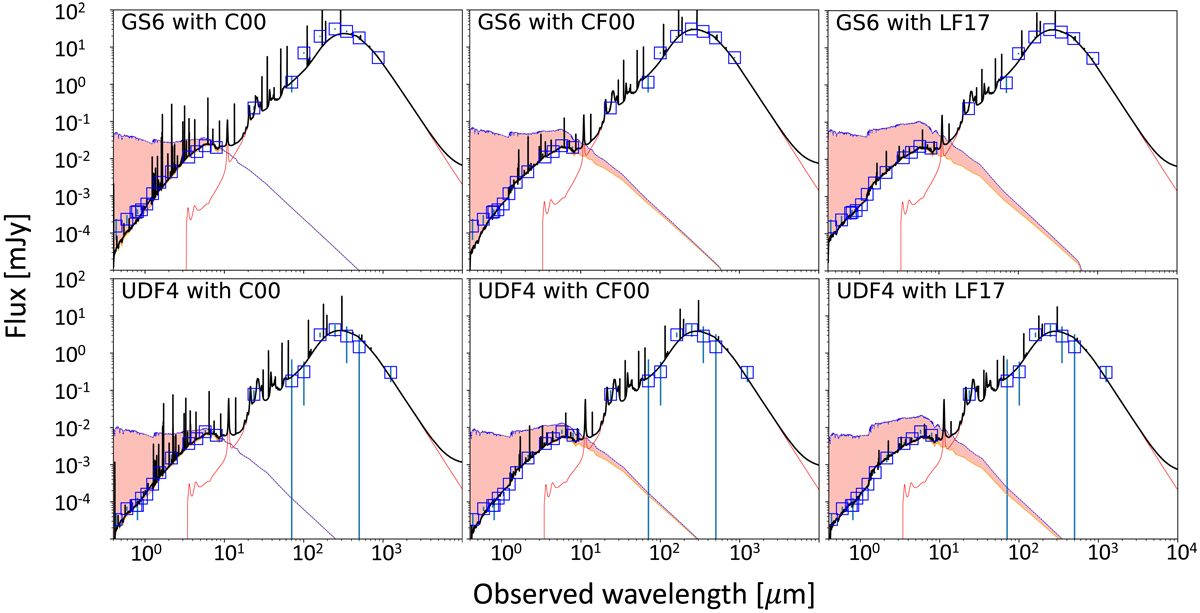Fig. 5.

Examples of best fits of the full SED with the three attenuation laws for two galaxies: UDF4 (lower row) and GS6 (upper row). x-axis: observed wavelength in μm, y-axis: observed flux in mJy. From left to right: C00, CF00, and LF17 laws. The black line represents the best fitted spectrum composed of attenuated stellar emission, nebular lines, and dust emission. The data points are plotted with empty blue squares and their 3σ error with blue vertical lines. The intrinsic, unabsorbed stellar continuum is plotted with a dashed blue line, the red shaded area indicates the amount of absorbed light, reprocessed in IR. The best fit is found with C00 for UDF4 (![]() , ΔBIC= 23.3 and 29.81 for LF17 and CF00 respectively): the fit with C00 is better in the NIR which is underestimated with CF00 and LF17. Here, GS6 is best fitted with LF17 (
, ΔBIC= 23.3 and 29.81 for LF17 and CF00 respectively): the fit with C00 is better in the NIR which is underestimated with CF00 and LF17. Here, GS6 is best fitted with LF17 (![]() , ΔBIC = 17.8 and 117 for CF00 and C00 respectively) and C00 and, to a lesser extent CF00, produce an overly high attenuation in the UV, a grayer attenuation law as LF17 better reproduces the UV with a substantial attenuation in the NIR.
, ΔBIC = 17.8 and 117 for CF00 and C00 respectively) and C00 and, to a lesser extent CF00, produce an overly high attenuation in the UV, a grayer attenuation law as LF17 better reproduces the UV with a substantial attenuation in the NIR.
Current usage metrics show cumulative count of Article Views (full-text article views including HTML views, PDF and ePub downloads, according to the available data) and Abstracts Views on Vision4Press platform.
Data correspond to usage on the plateform after 2015. The current usage metrics is available 48-96 hours after online publication and is updated daily on week days.
Initial download of the metrics may take a while.


